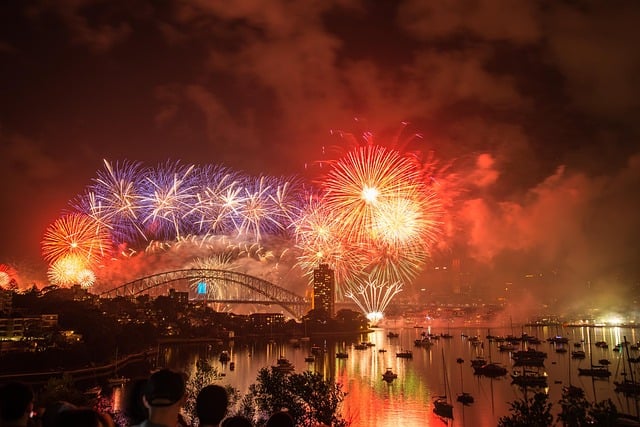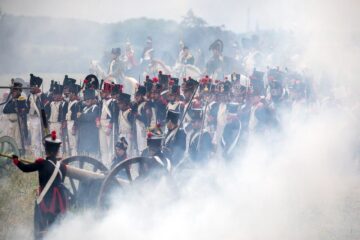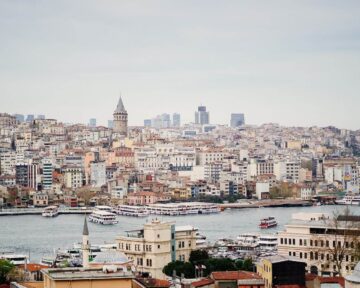New beginnings are in order, and you are bound to feel some level of excitement as new chances come your way, says Auliq Ice and we couldn’t agree more
A brand New Year is almost upon us. By now, you’ve made appetizers for your annual New Year’s Eve party and made a list of goals for the coming year. Then, of course, there’s the thing of watching the ball drop on New Years’ eve.
But do you not everyone in the world celebrates New Years’ day when you do. While most of the world follows the Gregorian calendar, with 365 days, or 12 months in a year, and leap years to the T, there are some cultures that beg to differ. Since they follow lunar, solar, and other hybrid calendars to tell time, in these traditions New Year’s Day does not necessarily fall on January 1st.
Also, they don’t celebrate it the way, Americans do. Like the Balinese welcome the New Year by spending the entire day in total silence.
Whatever the mode of celebration, a prayer/silent wish in hopes of receiving a bestowal of blessings for the year ahead remains common for all. So the following lowdown highlights few of the offbeat New Year celebrations across the world celebrated not on January 1. Enjoy!
1) Chinese New Year
The Chinese New Year (Chūn jié) is based on the lunar calendar and hence falls on different dates every year. It usually takes place anytime between Jan. 21 and Feb. 20. For 2020, it will fall on January 25th.
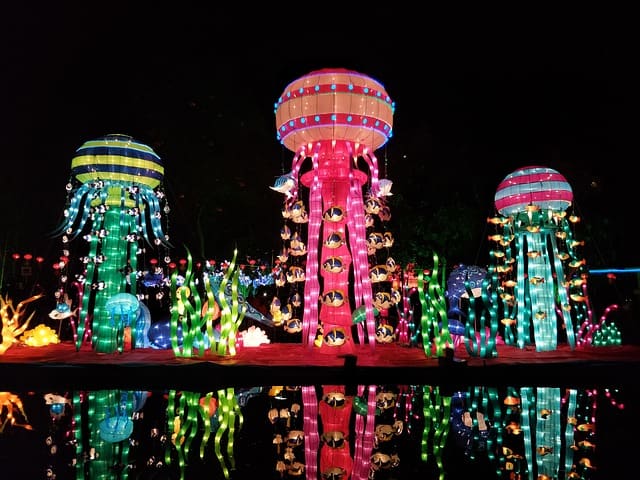
The official holiday is seven days long, but the celebration typically lasts for more than two weeks (until February 8th, 2020). This makes it the longest celebration of New Years’ anywhere in the world. 2020 is a year of the Rat according to Chinese zodiac.
Chinese celebrate the time with a week off from work, eating traditional foods (such as whole fish, eight treasures rice and glutinous rice cake, or nián gāo) and watching dancing dragon performances. The celebrations come to close with the Festival of Lanterns.
2) Iranian New Year
Iranian or the Persian New Year (Nowruz/Norooz) is the most important holiday in Iran, marking the official New Year of the country. Celebrated for over 3,000 years it will fall on March 20th for 2020. It is observed on the day of the vernal equinox.
On this day Persians take the time to buy new clothes for the New Year. Buying flowers, especially hyacinths and tulips, are also very common on Nowruz Eve. People decorate their homes with prosperous symbols of fish, birds, butterflies, and stars.

Family members gather around the “Haft Seen.” This is a traditional table setting where people exchange gifts. The table is laden with seven items that start with the letter S. These items can be fruits or spices. They symbolize sunrise and the spice of life, love, affection, patience, and age.
Traditional Persian delicacies as Baklava, Samanu (sweet wheat pudding), Senjed (dried Persian olives) and a bowl of special noodle soup are consumed as a part of celebrations. One of those offbeat New Year celebrations you have to live!
3) Bali New Year
If we’re talking about offbeat New Year celebrations, this one has to be on the list.
In Bali, Indonesia, the New Years’ day (Nyepi Day) is celebrated in a really unique way. It falls every year on the Hindu Lunar New Year. For 2020 it will begin from 25th March and last until 6 am on Thursday 26th March.
The pre-Nyepi day celebrations comprise of a boisterous procession complete with live music, where men carry the ogoh-ogoh (symbols of mythological beings or demons, a spirit in which negative energy can be emitted into) on their shoulders.
As the procession completes, the ogoh-ogoh are taken to the cemetery or beach where they are burnt to ashes as a symbol of purification.
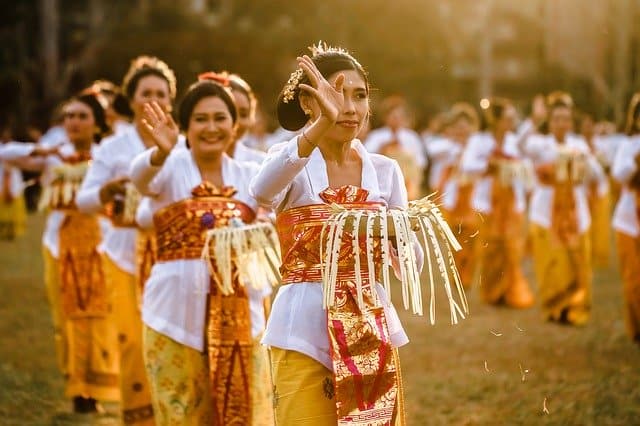
On Nyepi Day, the Balinese spend the hours in utter silence. It’s a day where the entire island paradise of Bali comes to a standstill and observes the sacred ritual of stillness.
No planes arrive or depart for 24 hours, there’s almost nil movement of cars, motorbikes as well as people on foot. All the people in Bali stay inside and refrain from indulging in any pleasurable activities. The objective is to spend the entire day fasting, reflecting and meditating.
4) Korean New Year
Korean New Year (Seollal) is the first day of the lunar Korean calendar. The traditional Korean New Year holidays begin from this day and last until three days. For the year 2020, it will be on January 25th.
During the festivities, it is common for adults to wear colorful traditional costumes, the Hanbok. A traditional Korean soup- Tteokguk is eaten on this day (only consumed on New Years’ day and Birthdays). It is considered that after finishing your Tteokguk, you are a year older.
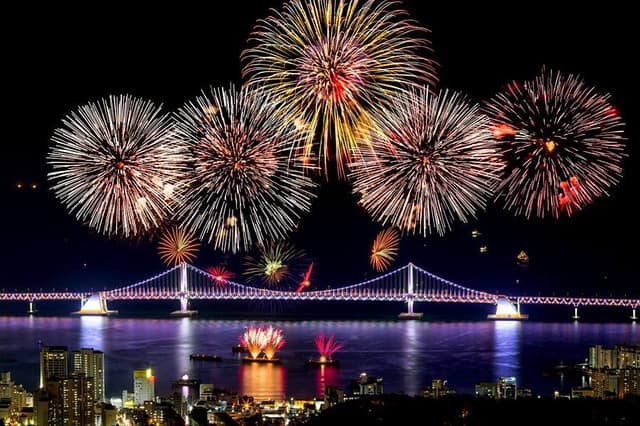
On Lunar New Year the ringing of the historic Boshingak Bell (originally constructed in 1396) also takes place. On New Years’ eve, parties and fireworks take place and people play the traditional board game of Yunnori.
5) Mongolian New Year
The Mongolian Lunar New Year (Tsagaan Sar) observed on the first new moon after the winter solstice, is a symbol of the warmer days of spring ahead. The celebrations last from three days to two weeks. For 2020, the dates are 23rd/24th February.
Celebrations include- lighting candles symbolizing enlightenment, enjoying a family dinner in the evening and playing card games in the hope of beginning a year-long good luck streak.
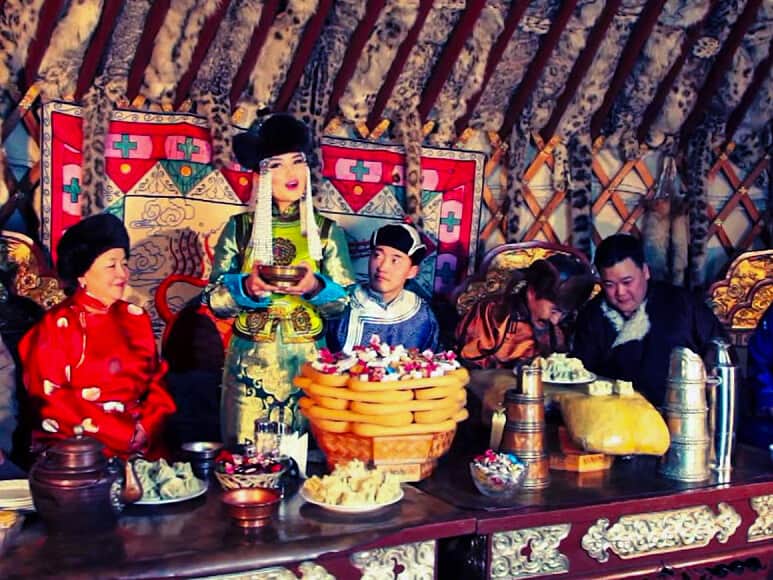
During this time debts are paid off, and grudges are forgiven. People visit their relatives on the New Year day beginning with parents.
They also dress in traditional clothes (del), exchange greetings and eat a lavish feast of traditional dishes as- Buuz (a steamed dumpling), sheep’s tail, mutton, rice with curds, dairy products, etc. It is also typical to drink ‘airag’ and exchange gifts.
6) Islamic New Year
The Islamic New Year (Raʼs as-Sanah al-Hijrīyah) celebrated by Muslim populations’ worldwide makes the first day of Muharram, the first month of the lunar Islamic Calendar. It celebrates the journey of Prophet Muhammed from Mecca to Medina, known as Hijrah.
Islamic New Year 2020 will begin on the evening of 19th August and end on the evening of 20th August.
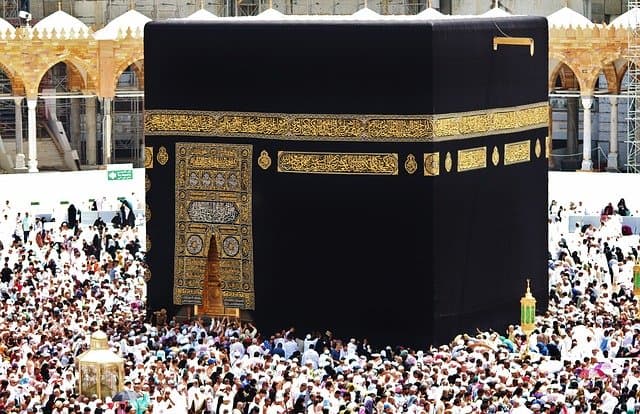
Different Islamic denominations – Shi’a and Sunni – perform different things to mark Muharram. Fasting too varies among different Muslim communities.
The day is usually celebrated with low-key religious events. Muslims often make resolutions on New Years’ Day. It is an official/public holiday in some countries.
7) Ethiopian New Year
The first day of the New Year in Ethiopia and Eritrea (Enkutatash) occurs on Meskerem 1 on the Ethiopian calendar. It is 11 September (during a leap year-12 September) according to the Gregorian calendar. The date marks the approximate end of the long rainy season.
It is also associated traditionally with the return of the Queen of Sheba to Ethiopia following her visit to King Solomon in Jerusalem.
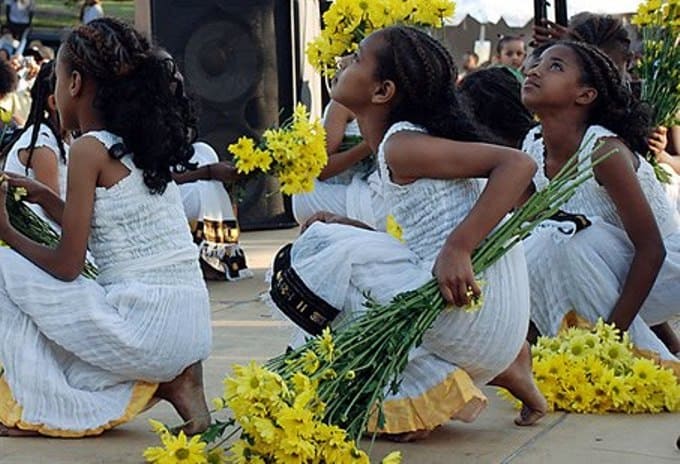
On the New Years’ day families after attending church in the morning, gather to share a traditional meal of injera (flatbread) and wat (stew). Later in the day, they don new clothes and present friends with a bouquet of daisies, singing New Year’s songs.
In modern urban spaces formal New Year greetings and cards are exchanged in place of the traditional bouquet of flowers. We couldn’t leave this out of our list of offbeat New Year celebrations!
8) Jewish New Year
Jews celebrate their New Year (Rosh Hashanah) beginning on the first of the month Tishrei. Rosh Hashanah signals the start of the Jewish High Holy Days (also known as Ten Days of Penitence) which come to a close with Yom Kippur.
For the year 2020 Rosh Hashanah will begin on the evening of 18 September and end on the evening of 20 September.
It is celebrated and marked in many different ways by Jews all over the world. One of the most noteworthy rituals is blowing the shofar (horn of a ram) in between the holiday prayers. During Rosh Hashanah people abstain from work and days are often devoted to quiet introspection and prayers in the synagogue.
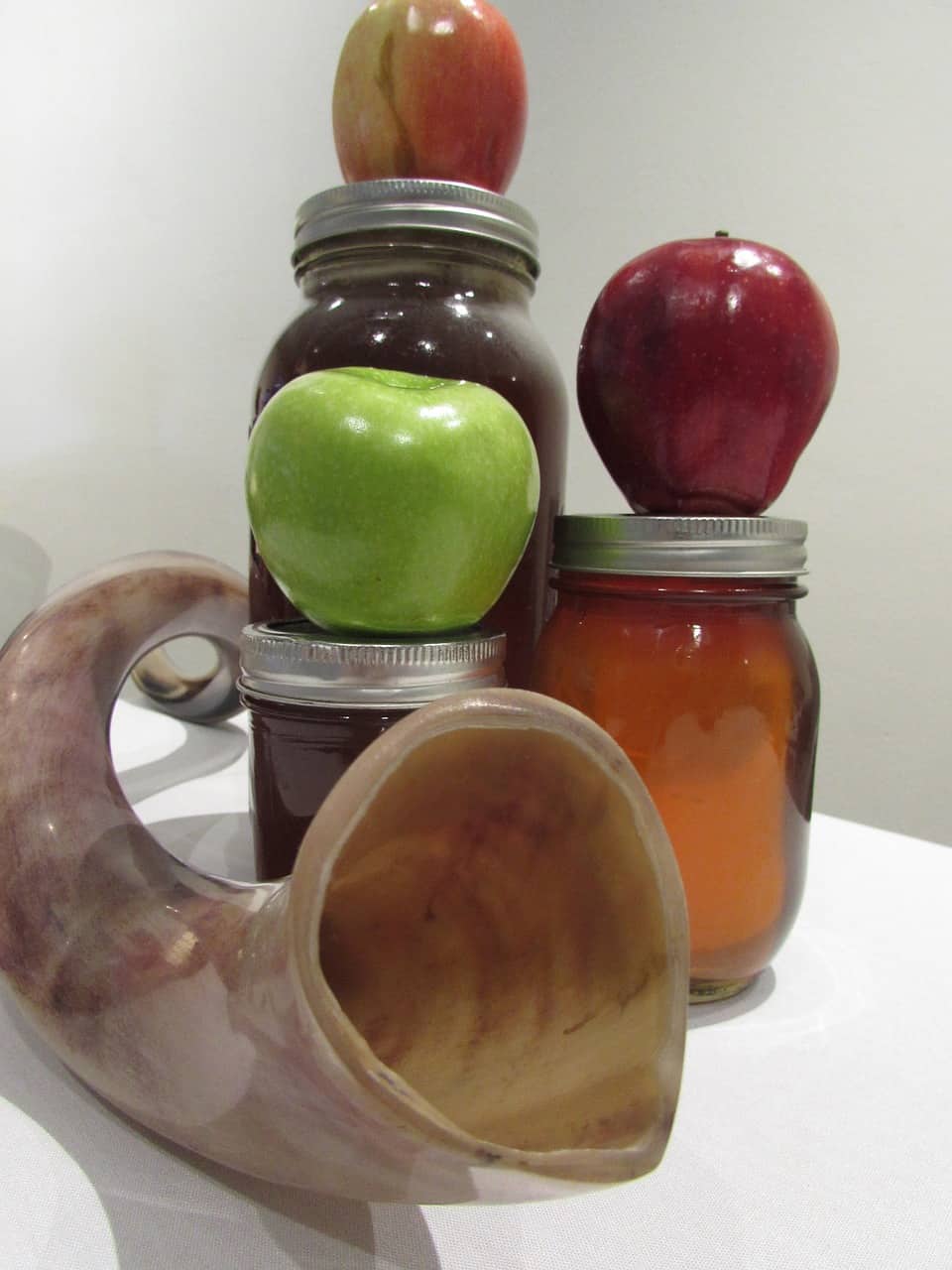
A popular practice exercised on this day is the practice of casting off (also called Tashlich). Believers walk to a flowing body of water, such as a creek, stream or river, and empty their pockets into the moving water (symbolic shedding of sin).
During the holiday people partake into traditional foods as- apples dipped in honey (signifying the wish for a sweet New Year), Pomegranates (symbolizing being fruitful) and Challah Bread (signifying the year’s cycle).
9) Sinhalese New Year
The New Year’s celebrated by both Sinhala Buddhists and Tamil Hindus in Sri Lanka is a national festival, known as Avurudu in Sinhala and Puththandu in Tamil. For the year 2020, it will be on 13th/14th April.
The annual event is marked by religious ceremonies, family activities, traditional foods, colorful decorations and a general feeling of goodwill and well being among people.
Unlike other cultures in which New Year’s Day welcomes harvest, Avurudu marks the end of the harvest season. It also coincides with the time when the sun is directly above the country. Locals celebrate the occasion by keeping their front doors open to encourage visits by family, friends, and even strangers.
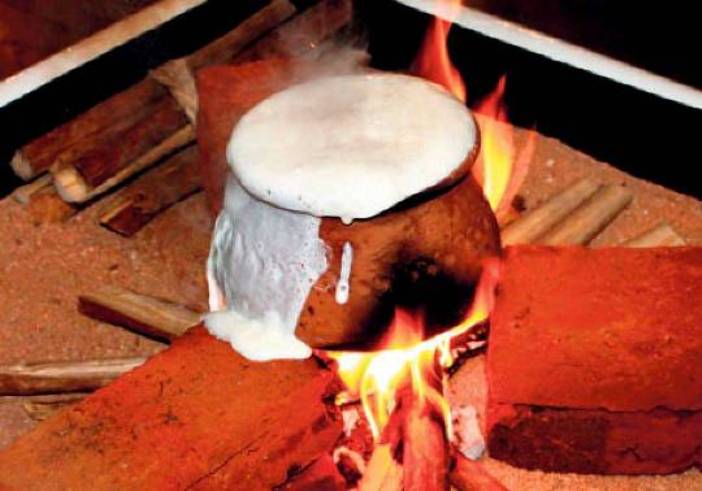
A special concoction called Pongal is prepared in a new pot by Tamils. Boiling over milk in a clay pot on Pongal is believed to symbolize a happy future. Lamps are lit to celebrate the arrival of a new year.
Sinhalese give thanks for the harvest and partake in sweetmeats as kokis and aggala. They also visit family and friends presenting them with a sheaf of betel as a sign of respect and gratitude.
10) Vietnamese New Year
Vietnamese New year (Tết Nguyen Dan) comes on the first day of the first month of the ancient lunisolar calendar and we just had to include it in our list of offbeat New Year celebrations. For the year 2020, it will be celebrated on 25th January.
It is the most important and widely celebrated public festival of the year in Vietnam. For the occasion, homes are cleaned and decorated with Hoa Mai (yellow apricot blossom), Hoa Dao (peach blossom), Kumquat tree and many other colorful flowers.
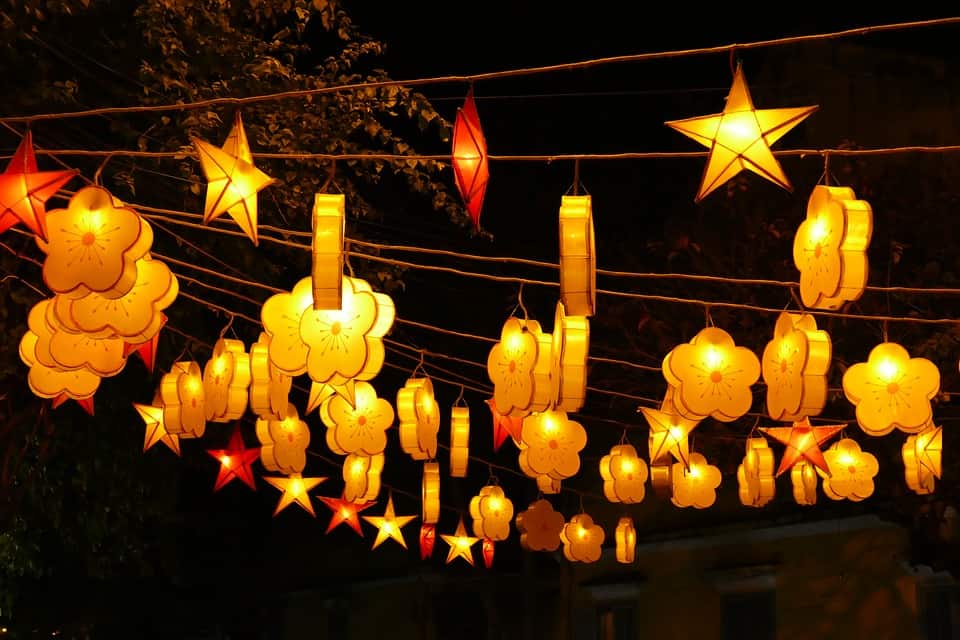
An abundance of food is cooked including traditional delicacies as Banh Chung (a sticky rice cake). Children receive ‘lucky money’ in red envelopes. People visit relatives and friends during Tet.
Each day during the New Year week, family members place offerings and burn incense to remember and honor the deceased ancestors.
A popular event to mark New Year is Flower Street in Ho Chi Minh City, attracting over one million visitors each year. The animal of the New Year is also displayed along with many flowers.
So how did you like these offbeat New Year celebrations around the world? Do let us know your views in the comments below 🙂

